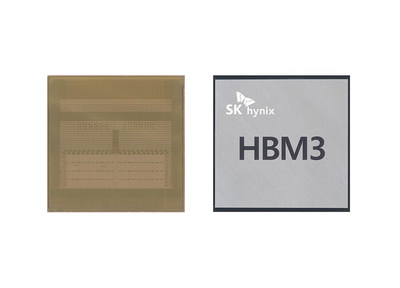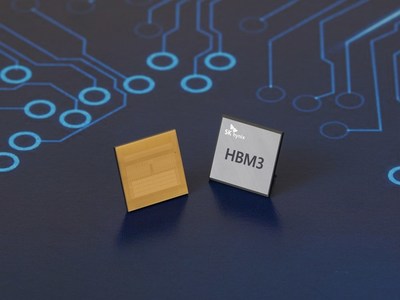SK hynix Announces Development of HBM3 DRAM
SK hynix has developed High Bandwidth Memory 3 (HBM3), the fastest DRAM globally, marking a significant milestone in memory technology. HBM3 processes up to 819GB/s, a 78% increase from its predecessor, HBM2E, enabling rapid data transmission. The product boasts a capacity of 24GB, the largest in the industry, and integrates advanced error-correction technology for enhanced reliability. HBM3 is expected to drive performance in high-performance data centers and AI platforms. This achievement solidifies SK hynix's leadership in the premium memory market.
- None.
- None.
Insights
Analyzing...
SEOUL, South Korea, Oct. 19, 2021 /PRNewswire/ -- SK hynix Inc. (or "the Company", www.skhynix.com) announced that it has become the first in the industry to successfully develop the High Bandwidth Memory 3, the world's best-performing DRAM.
HBM3, the fourth generation of the HBM technology* with a combination of multiple DRAM chips vertically connected, is a high value product that innovatively raises the data processing rate.
*Previous three generations are HBM, HBM2 and HBM2E, which is an update to the HBM2 specification with increased bandwidth and capacities. |
The latest development, which follows the start of mass production of HBM2E in July last year, is expected to help consolidate the company's leadership in the market. SK hynix was also the first in the industry to start mass production of HBM2E.
SK hynix's HBM3 is not only the fastest DRAM in the world, but also comes with the biggest capacity and significantly improved level of quality.
The latest product can process up to 819GB (Gigabyte) per second, meaning that 163 FHD (full-HD) movies (5GB each) can be transmitted in a single second. This represents a
It also corrects data (bit) errors with the help of the built-in on-die error-correction code, significantly improving the reliability of the product.
SK hynix's HBM3 will be provided in two capacity types of 24GB – the industry's biggest -- and 16GB. For the 24GB product, SK hynix engineers ground the height of a DRAM chip to approximately 30 micrometer (μm, 10-6m), equivalent to a third of an A4 paper's thickness, before vertically stacking 12 chips using the through silicon via technology.
*Through Silicon Via (TSV): An interconnecting technology that links the upper and lower chips with electrode that vertically passes through thousands of fine holes on DRAM chips |
HBM3 is expected to be mainly adopted by high-performance data centers as well as machine learning platforms that enhance the level of artificial intelligence and super computing performance used to conduct climate change analysis and drug development.
"Since its launch of the world's first HBM DRAM, SK hynix has succeeded in developing the industry's first HBM3 after leading the HBM2E market," said Seon-yong Cha, Executive Vice President in charge of the DRAM development. "We will continue our efforts to solidify our leadership in the premium memory market and help boost the values of our customers by providing products that are in line with the ESG management standards."
About SK hynix Inc.
SK hynix Inc., headquartered in Korea, is the world's top tier semiconductor supplier offering Dynamic Random Access Memory chips ("DRAM"), flash memory chips ("NAND flash") and CMOS Image Sensors ("CIS") for a wide range of distinguished customers globally. The Company's shares are traded on the Korea Exchange, and the Global Depository shares are listed on the Luxemburg Stock Exchange. Further information about SK hynix is available at www.skhynix.com, news.skhynix.com.
![]() View original content to download multimedia:https://www.prnewswire.com/news-releases/sk-hynix-announces-development-of-hbm3-dram-301404077.html
View original content to download multimedia:https://www.prnewswire.com/news-releases/sk-hynix-announces-development-of-hbm3-dram-301404077.html
SOURCE SK hynix Inc.









